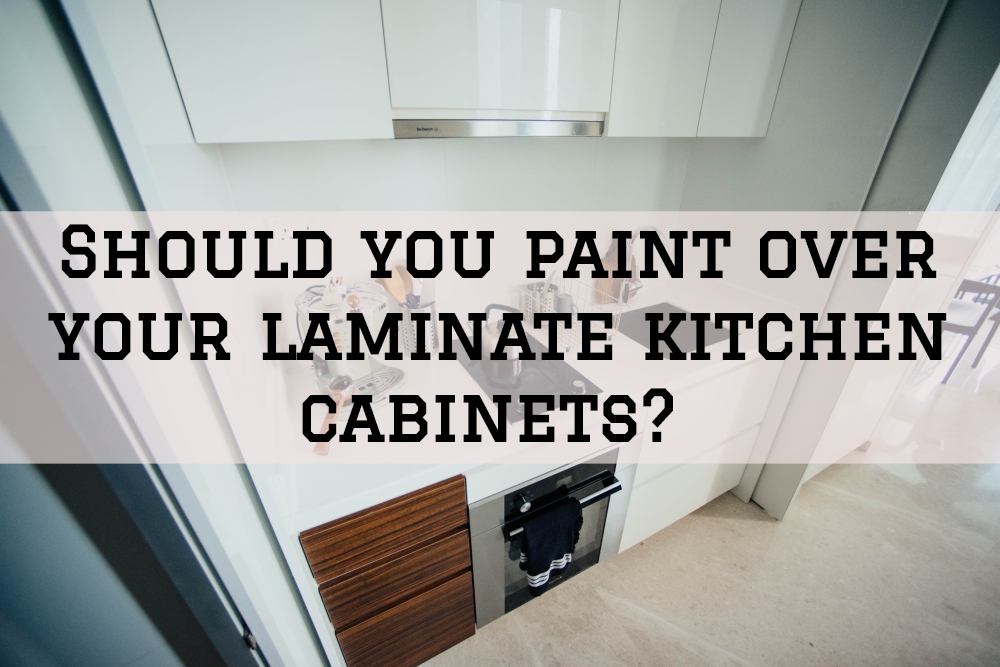
If your laminate kitchen cabinets are looking all worn out and dated, you must be wondering if you can actually paint over them and bring them to this decade. The question on whether or not you can paint over laminate is a fairly popular one, given the fact that laminate cabinets are not common in modern kitchens.
For starters, laminate is a man-made, shiny, non-porous, material which is like a “photo” or “print” of wood grain. Laminate manufacturers use this material to cover less expensive wood-composite furniture to give the impression of super-quality wood.
The fact is, you can indeed paint laminate kitchen cabinets, but it’s a tough task to accomplish. In fact, most homeowners opt to reface or replace their laminate kitchen cabinets rather than repainting. The biggest challenge with painting laminate surface is that its smooth, plastic-like surface doesn’t bond well with paint.
Another common challenge when painting laminate surfaces is bubbling while the primer and paint is still wet. This, in addition to poor paint adhesion, makes the paint to scratch off easily long after your paint job is complete. The key to successfully results is thorough preparation and the correct choice of materials –primer, paint, brushes etc.
Nonetheless, painting your laminate cabinets is the best alternative to refacing or replacing, which is way more expensive and require more time. Painting your laminate cabinets is an effective way of updating the look for your kitchen. Below is a quick guide on how to paint laminate cabinets.
A quick guide to painting your laminate kitchen cabinets
Prepare your surfaces
As earlier mentioned, the key to getting pristine results on your laminate cabinets paint job is preparation. First, take down the cabinet doors and drawers, and remove all the hardware such as hinges, drawer pulls and handles. Check the surfaces for any damages and repair warped, cracked or unwrapping laminate.
Clean all the doors, drawers and frames thoroughly to remove any grease, dust or dirt that can prevent paint from adhering. If the surfaces have noticeable staining or grease, use TSP solution or water and vinegar. Use a damp tack cloth to rinse off any chemical residue you used for cleaning.
Sand the cabinets lightly
You probably didn’t see this coming. Well, laminate cabinets also require sanding. In fact, sanding is what makes the paint adhere nicely to the surfacing. But it’s best to sand the surface lightly. A 150-220 grit sandpaper will do a good job of making the surface cleaner and less smooth for adherence of the primer and paint. Sanding also ensures that your paint job lasts. Just sand lightly as if you’re wiping your cabinets.
Prime cabinets and doors
Choose a primer designed for laminate surface, or at least shiny, glossy surfaces. Use a good quality brush to minimize strokes marks as you paint hard-to-reach surface. For the doors themselves and any other large surfaces, use a roller to get a smooth, brush stroke-free finish. Allow the primer to completely dry before the next step.
Once the primer has fully dried, give everything a light sand again. Use a fine grit sandpaper to smooth the surface. Clean off the dust with a tack cloth again. If you’re making a drastic color transition, tint your primer with a bit of the paint you will use to make sure the previous color and any stains are completely hidden.
Apply your paint
Finally, it’s time to add your paint. Again, choose a paint designed specifically for laminate surfaces. You can paint your laminate cabinets in pretty much any color of your choice. Most laminate specific paints dry easily to form a rough, chip-resistant finish which you can clean easily using mild liquid detergent.
You also can turn plain flat-front doors into paneled ones with wood or composite moldings. Find moldings in various widths and designs at your local hardware store, then have them miter-cut to your specifications or do it yourself using a miter box and handsaw. Once they’re cut to size, paint the moldings, following the instructions above. When they are dry, use wood glue to adhere them to the door fronts.
With some patience, proper preparation and appropriate selection of the paint and primer, you can get pretty sleek results. If you’re not sure how to go about it or simply need a professional touch to your laminate kitchen cabinets, contact us and we will be happy to help.
